+91-9971035318 | +91-9711370320
info@tsoiindia.com
Do not hesitate to give us a call. We are an expert team and we are happy to talk to you.
+91-9711300397
+91-9971035318
info@tsoiindia.com
As the name signifies, this tour introduces you with the insight view of the Indian State Himachal Pradesh and takes you through Lahaul & Spiti valley without which a visit to Himachal Pradesh is incomplete.
Popularly known as Little Tibet, Spiti is nestled in the Himalayan Mountain range in Himachal Pradesh. Accessible only during summer, Spiti is as remote as it gets. Surrounded by mountains and glaciers, villages perched on mountain crests, quaint old monasteries, crystal clear rivers and streams, prayer flags fluttering in the wind and monks in their robes evoke strong comparisons with Tibet and leaves tourists to this remote region spellbound.
Cut off from the tourist map because of its remoteness, Spiti, along with its twin valley of Lahaul, has retained its pristine charm.
A trip to villages situated around Spiti can be an interesting experience. Kunzum Pass, the gateway to Spiti, leads to the Bara-Sigri glacier, the second longest glacier in the world. Monasteries and gompas represent the ancient culture and tradition of Spiti. Tabo Monastery, one of the oldest Buddhism centers in western Himalaya, is located here. Murals of Tabo monasteries are quite similar to Ajanta paintings. Lamas practice dance, sing and play musical instrument or enchanting mantras.
Day 01 Arrive Delhi
Day 02 Delhi
Day 03 Delhi – Kasauli (300 Kms/ 07 Hrs)
Day 04 Kasauli – Shimla – Narkanda (140 Kms/ 6 Hrs)
Day 05 Narkanda – Rampur – Kapla (165 Kms/ 7 Hrs)
Day 06 Kalpa – Nako – Tabo (Full Day)
Day 07 Tabo – Dhankar – Pin Valley – Kaza (Full Day)
Day 08 Kaza
Day 09 Kaza – Kunzum pass – Keylong (210 kms/ 10 Hrs)
Day 10 Keylong
Day 11 Keylong – Rohtang pass – Manali (137 kms/ 06 Hrs)
Day 12 Manali
Day 13 Manali – Palampur (180 Kms/ 5.5 Hrs)
Day 14 Palampur – Amritsar (240 Kms/ 5.5 Hrs)
Day 15 Amritsar
Day 16 Amritsar – Delhi (450 Kms/ 08 Hrs)
Day 17 Delhi Departure
Day 01 Arrive Delhi
 On your arrival at Delhi airport, meet our representative (preferred language speaking) and greeted with a warm welcome with garlanding. Then our representative will escort you to the pre-booked hotel. Arrive hotel & fulfil check-in formalities. Spare little time with our representative to provide brief information about the tour.
On your arrival at Delhi airport, meet our representative (preferred language speaking) and greeted with a warm welcome with garlanding. Then our representative will escort you to the pre-booked hotel. Arrive hotel & fulfil check-in formalities. Spare little time with our representative to provide brief information about the tour.
Overnight stay at hotel.
Day 02 Delhi City Tour
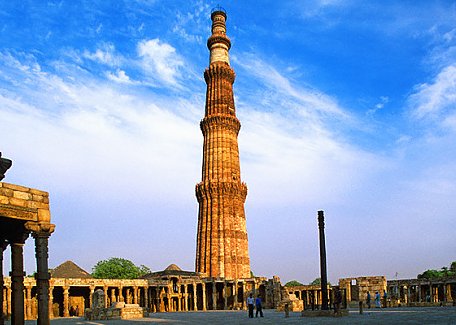 This day introduces you with the city Delhi where you can witness a unique blend of the traditional and cosmopolitan styles. Delhi is a city that bridges two different worlds. Old Delhi, once the capital of Islamic India, is a labyrinth of narrow lanes lined with crumbling havelis and formidable mosques. In contrast, the imperial city of New Delhi created by the British Raj is composed of spacious, tree-lined avenues and
This day introduces you with the city Delhi where you can witness a unique blend of the traditional and cosmopolitan styles. Delhi is a city that bridges two different worlds. Old Delhi, once the capital of Islamic India, is a labyrinth of narrow lanes lined with crumbling havelis and formidable mosques. In contrast, the imperial city of New Delhi created by the British Raj is composed of spacious, tree-lined avenues and
After breakfast gather at hotel’s lobby & proceed for guided city tour of Delhi including Jama Masjid followed by Rikshaw ride, Raj Ghat, Humayun’s Tomb – the first garden-tomb in the Indian subcontinent, and a UNESCO World Heritage Site, drive past through India Gate & Rashtrapati Bhawan (President’s House), Akshardham Temple (closed on Mondays) – A Hindu temple which exemplifies traditional Hindu culture and architecture. 7000 artisans were involved in the construction of the temple aided by 3000 volunteers.
At last visit Qutab Minar to experience night view (visit permitted till 9 pm). The Qutub Minar is a towering 73-meter-high tower built by Qutub-ud-Din Aibak in 1193. The tower was built to celebrate Muslim dominance in Delhi after the defeat of Delhi’s last Hindu ruler. This tower is the highest tower in India, complete with five storeys and projecting balconies. The first three storeys of the Qutub Minar are made of red sandstone and the last two are made of marble and sandstone.
Apart from the tower, the Qutub Minar complex comprises of the Quwwat-us-Islam Mosque (the first mosque to be built in India), a 7-metre-high iron pillar, the tomb of Iltutmish, Ala’i-Darwaza and the Ala’I Minar.
After sightseeing return to your hotel. Overnight stay at hotel.
Day 03 Delhi – Kasauli (300 Kms/ 07 Hrs)
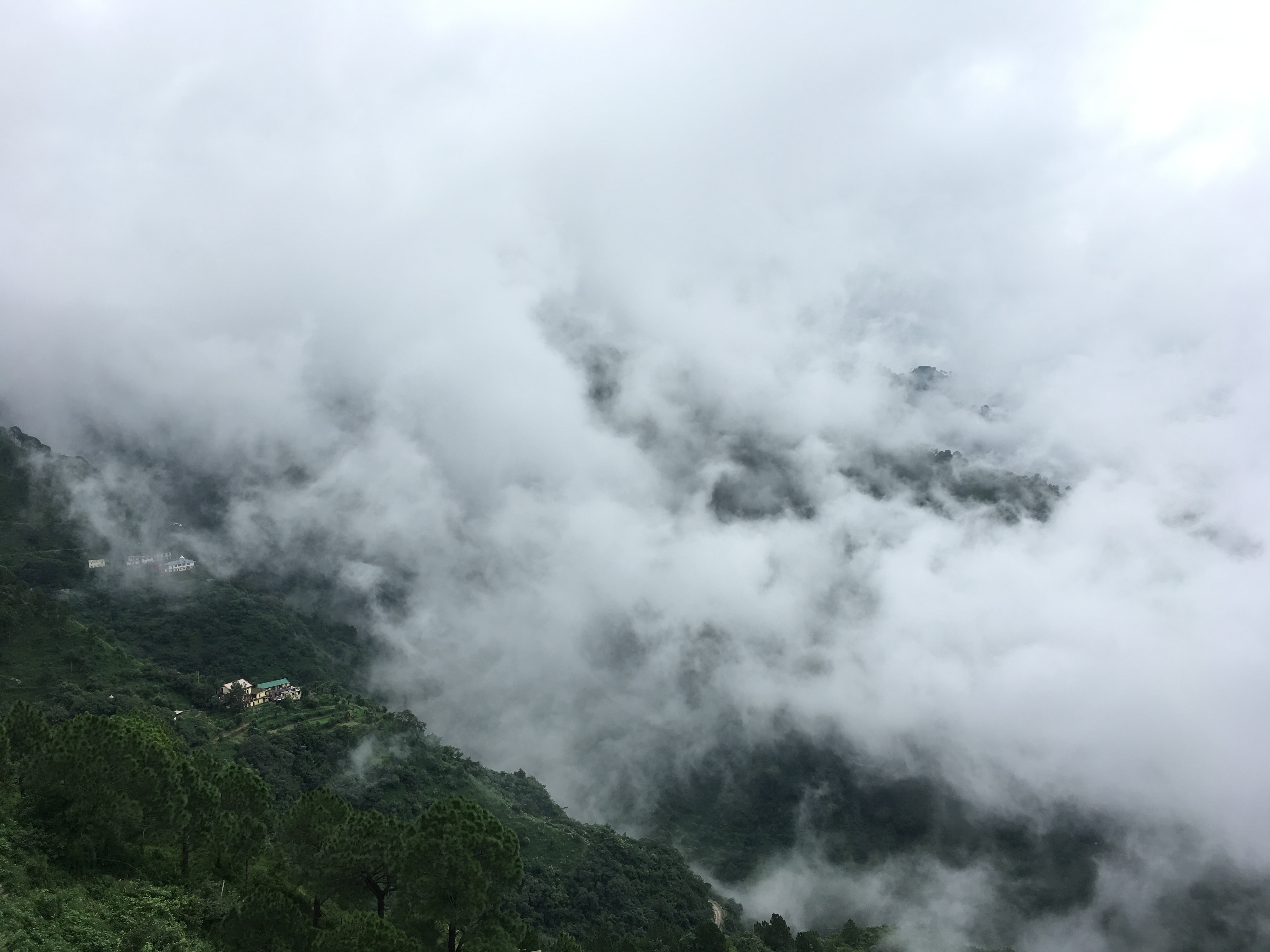 After breakfast, check out from hotel & proceed towards Kasauli by road. Nestled amidst beautiful woody forests of pines (Chir Pine), herbs (Milk Thistle) and cedar trees, Kasauli owes its mystical and serene ambience to the lavish Victorian buildings built by the Britishers who resided here years back. Arrive Kasauli & check-in at hotel. Rest of the day at leisure in the lap of nature.
After breakfast, check out from hotel & proceed towards Kasauli by road. Nestled amidst beautiful woody forests of pines (Chir Pine), herbs (Milk Thistle) and cedar trees, Kasauli owes its mystical and serene ambience to the lavish Victorian buildings built by the Britishers who resided here years back. Arrive Kasauli & check-in at hotel. Rest of the day at leisure in the lap of nature.
Overnight stay at hotel.
Day 04 Kasauli – Shimla – Narkanda (140 Kms/ 6 Hrs)
 After breakfast, check out from hotel and transfer to Narkanda via Shimla. Shimla was the former summer capital of British India and now is the capital of Himachal Pradesh. In Shimla visit Vice Regal Lodge, which now houses the Institute of Advanced Studies. Sitting on the flat top of Observatory Hill, this Elizabethan mansion was built in 1888. The grey building still retains its grandeur, with a lion and unicorn guarding the entrance, immaculate lawns and original brass fire hydrants from
After breakfast, check out from hotel and transfer to Narkanda via Shimla. Shimla was the former summer capital of British India and now is the capital of Himachal Pradesh. In Shimla visit Vice Regal Lodge, which now houses the Institute of Advanced Studies. Sitting on the flat top of Observatory Hill, this Elizabethan mansion was built in 1888. The grey building still retains its grandeur, with a lion and unicorn guarding the entrance, immaculate lawns and original brass fire hydrants from
After sightseeing continue your journey towards Narkanda which is a small town in Himalayas offering some majestic views around. Upon arrival, proceed for check-in at the hotel. Rest of the day at leisure and overnight at hotel.
Day 05 Narkanda – Rampur – Kapla (165 Kms/ 7 Hrs)
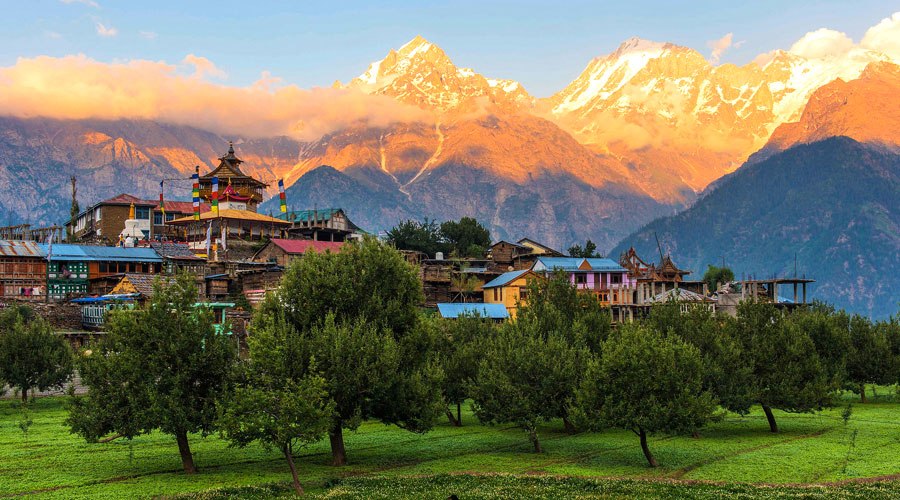 Travel by surface from Narkanda to Kalpa via Rampur. Kalpa is a beautiful village from where one can on look the changing colors of Mt. Kinner Kailash. On reaching check in at your hotel and later after rest and relaxation, visit the local Hu-Bu-Lan-Kar monastery. This monastery was founded by Rinchensang-po ( 950-1055 AD).
Travel by surface from Narkanda to Kalpa via Rampur. Kalpa is a beautiful village from where one can on look the changing colors of Mt. Kinner Kailash. On reaching check in at your hotel and later after rest and relaxation, visit the local Hu-Bu-Lan-Kar monastery. This monastery was founded by Rinchensang-po ( 950-1055 AD).
Day 06 Kalpa – Nako – Tabo (Full Day)
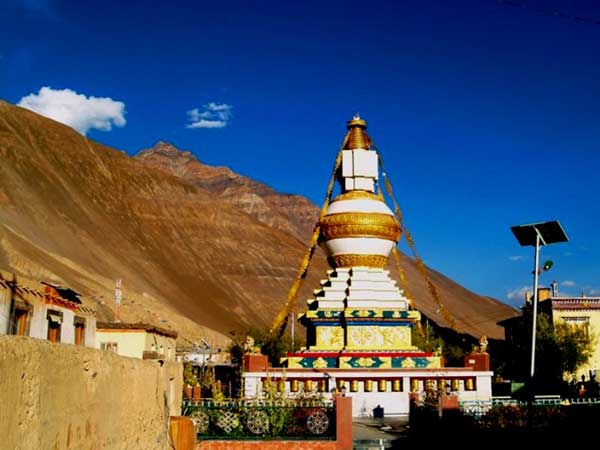 After breakfast, head on for Tabo enroute visiting Nako. The main attraction of this small village is a lake, which, in winters converts into a sheet of ice. The Nako Monastery stands at the western edge of the village and has four important temples amongst other structure. Out of these, the Main Temple (Translator’s Temple) and the Upper Temple are more important. Later continue towards Tabo. On arrival check in at hotel. Afternoon proceed to visit Tabo monastery.
After breakfast, head on for Tabo enroute visiting Nako. The main attraction of this small village is a lake, which, in winters converts into a sheet of ice. The Nako Monastery stands at the western edge of the village and has four important temples amongst other structure. Out of these, the Main Temple (Translator’s Temple) and the Upper Temple are more important. Later continue towards Tabo. On arrival check in at hotel. Afternoon proceed to visit Tabo monastery.
Day 07 Tabo – Dhankar – Pin Valley – Kaza (Full Day)
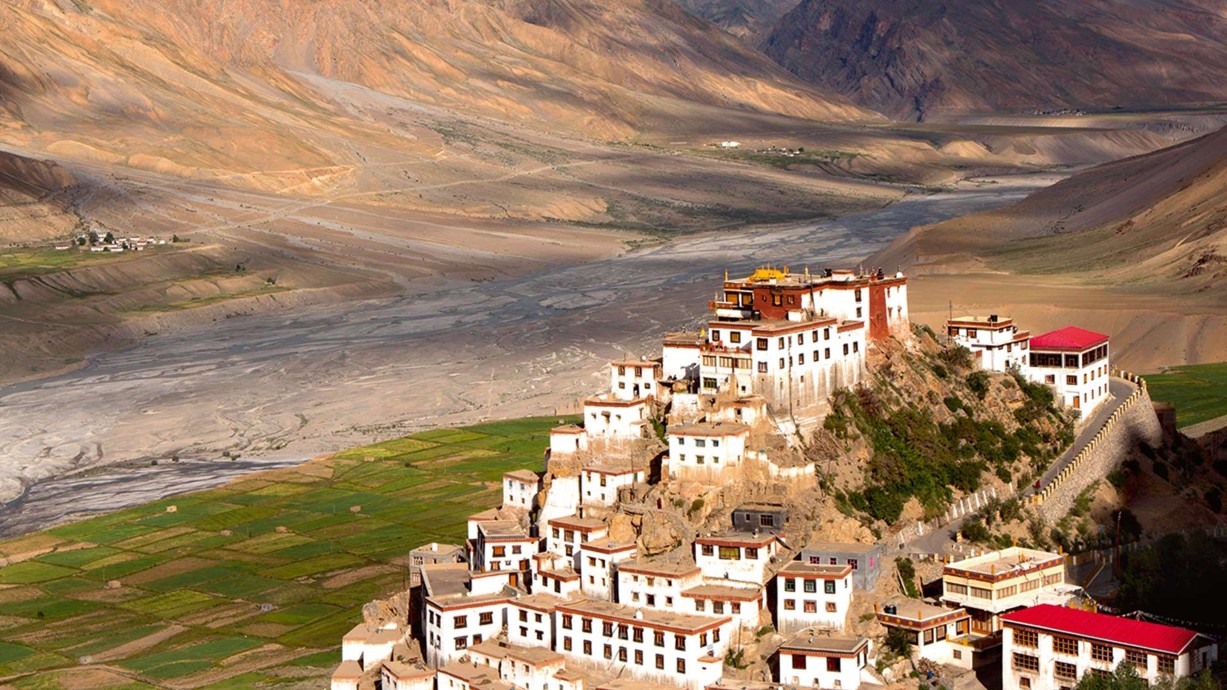 This day continue the drive to the inner Himalayas along the barren territories of Spiti Valley. After breakfast proceed to Dhankar. Also known as Dankhar, Drangkhar or Dhangkar Gompa is village and also a Gompa. It is situated at an elevation of 3,894 metres (12,774 feet) above Dhankar Village. The complex is built on a 1000-foot (300-metre) high
This day continue the drive to the inner Himalayas along the barren territories of Spiti Valley. After breakfast proceed to Dhankar. Also known as Dankhar, Drangkhar or Dhangkar Gompa is village and also a Gompa. It is situated at an elevation of 3,894 metres (12,774 feet) above Dhankar Village. The complex is built on a 1000-foot (300-metre) high
Day 08 Kaza
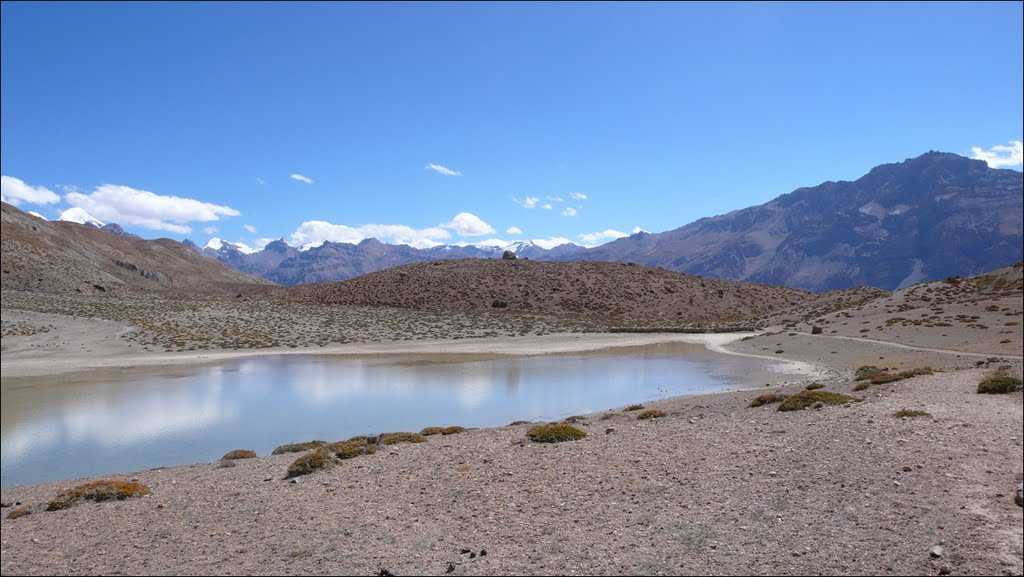 After breakfast go for an excursion to Ki Gompa and later Kibber village at an altitude of 4205 mts which is the highest permanently inhabited village of the region. Key Monastery in Spiti is the main research center of the Buddhists in India. Near about 300 lamas are receiving their religious training from here. It houses the rare painting and beautiful
After breakfast go for an excursion to Ki Gompa and later Kibber village at an altitude of 4205 mts which is the highest permanently inhabited village of the region. Key Monastery in Spiti is the main research center of the Buddhists in India. Near about 300 lamas are receiving their religious training from here. It houses the rare painting and beautiful
Day 09 Kaza – Kunzum pass – Keylong (210 kms/ 10 Hrs)
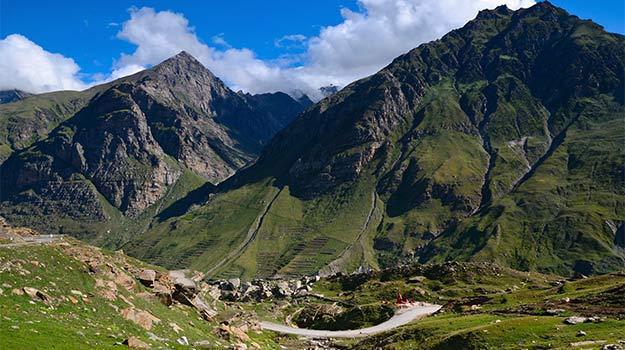 After breakfast proceed from Kaza to Keylong. The route takes a traveler over Kunzum pass. Kunzum Pass, at the height of 4,590 m is a high mountain pass on the eastern Kunzum Range of the Himalayas which connects the Lahaul Valley with the Spiti Valley. Evening arrive Keylong and check-in at hotel. Keylong is located along the Manali-Leh Highway,
After breakfast proceed from Kaza to Keylong. The route takes a traveler over Kunzum pass. Kunzum Pass, at the height of 4,590 m is a high mountain pass on the eastern Kunzum Range of the Himalayas which connects the Lahaul Valley with the Spiti Valley. Evening arrive Keylong and check-in at hotel. Keylong is located along the Manali-Leh Highway,
Day 10 Keylong
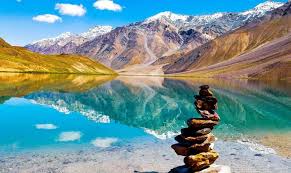 Today visit Kardang monastery, the largest and most important monastery in Lahaul, of the Drukpa sect of Tibetan Buddhism. This Monastery is located at an elevation of 3,500 m across the river, about 8 km from Keylong. Kardang is well connected by the road via the Tandi bridge which is about 14 km from Keylong. Built in the 12th century, this
Today visit Kardang monastery, the largest and most important monastery in Lahaul, of the Drukpa sect of Tibetan Buddhism. This Monastery is located at an elevation of 3,500 m across the river, about 8 km from Keylong. Kardang is well connected by the road via the Tandi bridge which is about 14 km from Keylong. Built in the 12th century, this
Day 11 Keylong – Rohtang pass – Manali (137 kms/ 06 Hrs)
 After breakfast, proceed to Manali via Rohtang pass. Rohtang Pass is located at the elevation of approx 3,978 m it’s a high mountain pass on the eastern Pir Panjal Range of the Himalayas. The pass provides a natural divide between the humid Kullu Valley with a primarily Hindu culture (in the south), and the arid high-altitude Lahaul and Spiti valleys with a Buddhist culture (in the north). Afterwards proceed to Manali.
After breakfast, proceed to Manali via Rohtang pass. Rohtang Pass is located at the elevation of approx 3,978 m it’s a high mountain pass on the eastern Pir Panjal Range of the Himalayas. The pass provides a natural divide between the humid Kullu Valley with a primarily Hindu culture (in the south), and the arid high-altitude Lahaul and Spiti valleys with a Buddhist culture (in the north). Afterwards proceed to Manali.
Day 12 Manali
 After buffet breakfast drive to Naggar, situated on the left bank of river Beas at an altitude of 1851m. Naggar – an ancient town commands extensive views, especially to the North West of the valley. Naggar Castle now turned into a hotel commands a spectacular view of the valley. Also visit the “Nicholas Roerich art Gallery”, an elegant mansion which houses the works of the famous Russian Painter Nicholas Roerich,
After buffet breakfast drive to Naggar, situated on the left bank of river Beas at an altitude of 1851m. Naggar – an ancient town commands extensive views, especially to the North West of the valley. Naggar Castle now turned into a hotel commands a spectacular view of the valley. Also visit the “Nicholas Roerich art Gallery”, an elegant mansion which houses the works of the famous Russian Painter Nicholas Roerich,
Day 13 Manali – Palampur (180 Kms/ 5.5 Hrs)
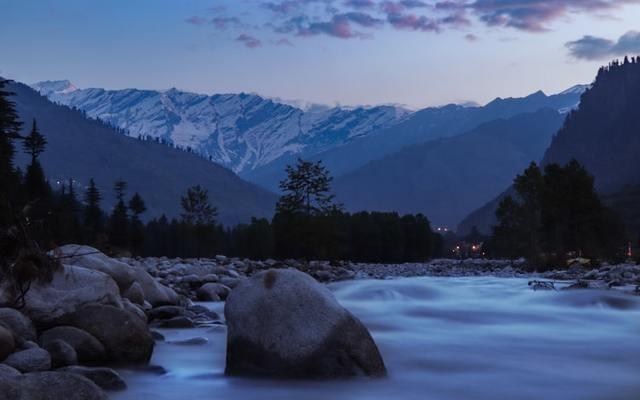 After breakfast, check out from hotel & proceed towards Palampur by road. Nestled between the majestic Dhauladhar Ranges, Palampur is known for its tea plantations and its excellent quality of tea. Palampur was first noticed by the Englishmen. Their presence in this town is beautifully reflected in the Victorian style mansions and castles.
After breakfast, check out from hotel & proceed towards Palampur by road. Nestled between the majestic Dhauladhar Ranges, Palampur is known for its tea plantations and its excellent quality of tea. Palampur was first noticed by the Englishmen. Their presence in this town is beautifully reflected in the Victorian style mansions and castles.
Afternoon, visit Tashi Jong Monastery & Baijnath Temple. Overnight stay at hotel.
Day 14 Palampur – Amritsar (240 Kms/ 5.5 Hrs)
 After an early breakfast, check out from hotel & proceed towards Amritsar. Arrive Amritsar & check-in at hotel.In the afternoon excursion to Wagah Border, located about 28 Kms from Amritsar is the border crossing between India and Pakistan. The changing of the guards and the ceremonial lowering of the flags ceremony is carried out with great pomp. Soldiers from both countries march in perfect drill, going through the steps of bringing down their respective national flags.
After an early breakfast, check out from hotel & proceed towards Amritsar. Arrive Amritsar & check-in at hotel.In the afternoon excursion to Wagah Border, located about 28 Kms from Amritsar is the border crossing between India and Pakistan. The changing of the guards and the ceremonial lowering of the flags ceremony is carried out with great pomp. Soldiers from both countries march in perfect drill, going through the steps of bringing down their respective national flags.
(Please note that in order to capture a closer view & to grab a seat which is provided on first come first serve basis & there is no prior reservation for the same, one need to reach there by 2-3 pm and ceremony will be processed around sunset).
After attending this ceremony, return to Amritsar. Overnight at the hotel.
Day 15 Amritsar
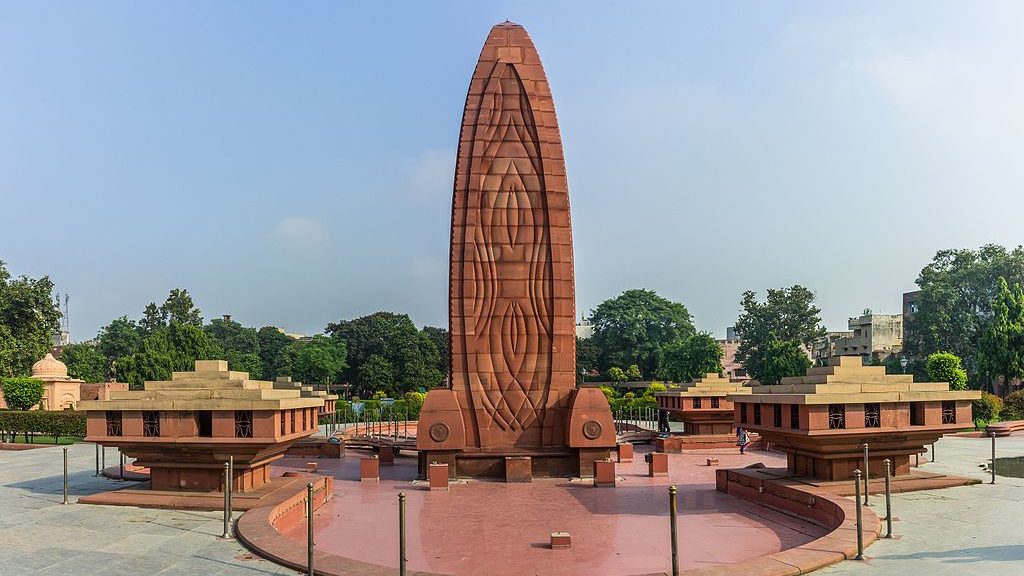 Early morning proceed for a visit at Golden temple during sunrise. Shining in the morning light, the gilded splendour of its panelling and big dome and small minarets, this temple is a fairy world palace to the devotees of the Sikh faith. After visiting Golden Temple, return to hotel for Breakfast & refreshments. Then in the afternoon, continue to visit
Early morning proceed for a visit at Golden temple during sunrise. Shining in the morning light, the gilded splendour of its panelling and big dome and small minarets, this temple is a fairy world palace to the devotees of the Sikh faith. After visiting Golden Temple, return to hotel for Breakfast & refreshments. Then in the afternoon, continue to visit
At last finish your day at Jallianwala Bagh – The historic site where hundreds of innocent Indian men, women and children were massacred by British General Michael Dyer on April 13, 1919. A memorial and Garden have been created here as a national monument.
Then evening at leisure to stroll down local market at Amritsar which has its own charm. While at Amritsar, do not miss to taste The Amritsari Kulcha (A type of Indian Bread) & Non veg too, if you are a Non veg lover. Return to hotel & Overnight stay at hotel.
Day 16 Amritsar – Delhi (450 Kms/ 08 Hrs)
After breakfast, check out from hotel & proceed towards Delhi. Arrive Delhi & check-in at hotel.
Rest of the day at leisure. Overnight stay at hotel.
Day 17 Delhi Departure
 This is the last day of the tour & it’s time to say Goodbye to India. The morning is at leisure. Your escort and vehicle are at your disposal. Later, depending on the time of your international flight you are assisted with your transfer to the airport for your home bound journey.
This is the last day of the tour & it’s time to say Goodbye to India. The morning is at leisure. Your escort and vehicle are at your disposal. Later, depending on the time of your international flight you are assisted with your transfer to the airport for your home bound journey.
